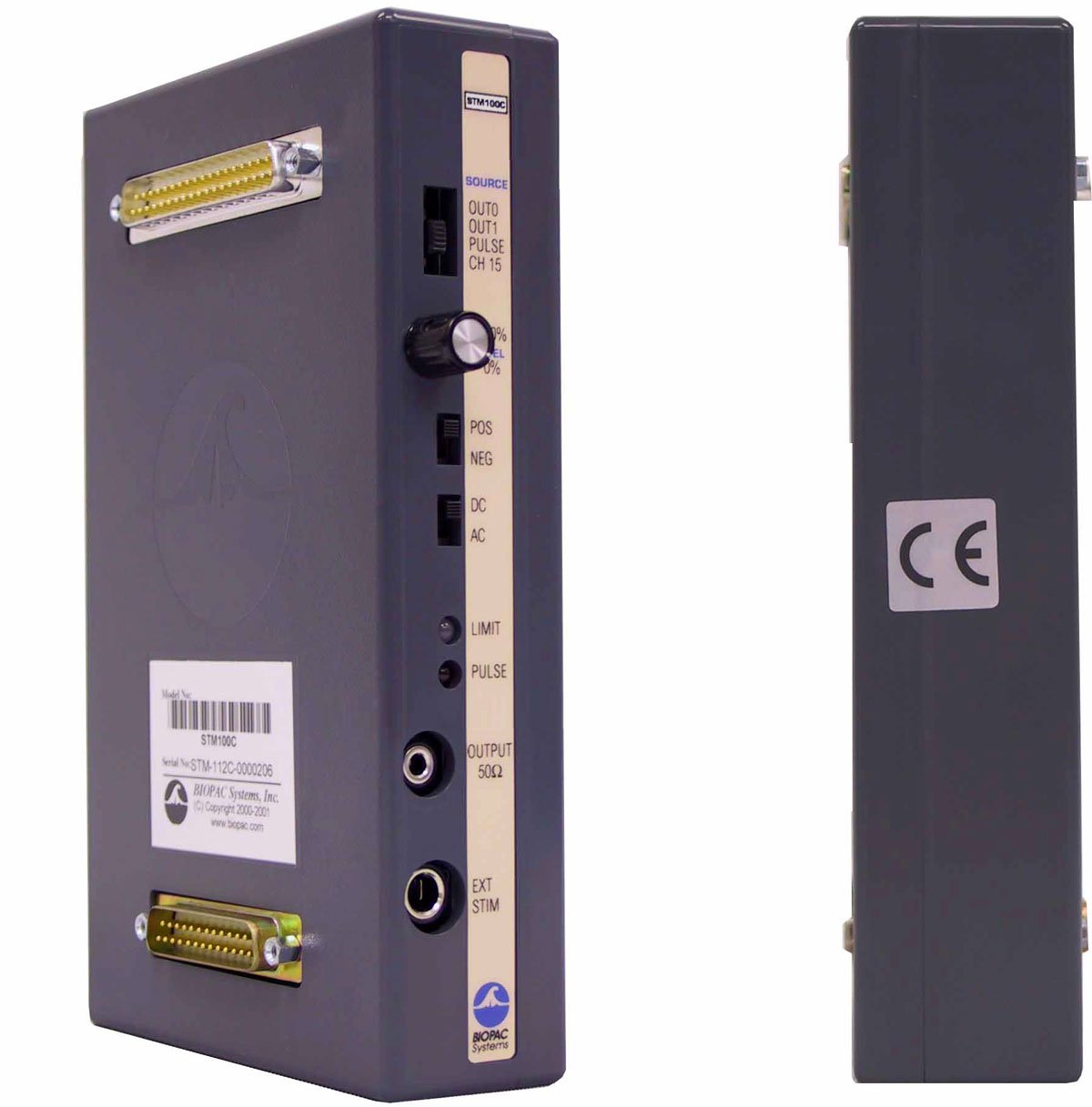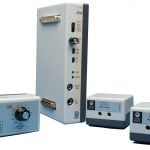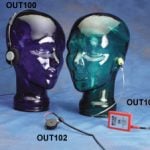Optional Add-ons
- With the CBL105 + CBL202, the STM100C can drive a low voltage (10 V) nerve conduction chamber directly (without a STMISO).
- The Current Feedback Monitor Cable (CBLCFMA) is recommended for use with any voltage stimulator; to isolate CBLCFMA output, use INISO and HLT100C. Always make sure to place the electrodes on the participant at least 10 minutes before starting any electrical stimulation. Use a CBLCFMA to monitor and record the actual current delivered to the participant at ALL times. A large enough change in current delivered to the participant will alter the subjective perception of the stimulation. Thus, an unpleasant shock may become painful if more current starts being delivered or become ineffectual if less current is being delivered than during threshold identification. Changes in the levels of delivered current are due to changes in impedance. Changes in impedance could be due to a number of factors: gel saturating the skin over time; gel drying up – over longer period of times; hydration level of participant; sweating; decoupling of electrodes and skin due to motion artifacts; etc.
- With the OUT100 headphones, the STM100C module can provide tone or click output (e.g. startle response). OUT100 headphones can also be used to listen to signals from other module outputs during acquisition (e.g., EMG or heart sounds signals).
- With the OUT101A ear tubephone, the STM100C can output a series of clicks or tone pips for auditory brainstem response (ABR) testing.
- With the OUT102 piezo transducer, the STM100C can provide an audible indicator, or alarm, when signal levels cross pre-defined thresholds.
- With the STMISO series stimulus isolation adapters, the STM100C can provide high voltage or constant current stimulus output for nerve conduction (see NERVE1 nerve chamber), somatosensory and other types of stimulus response studies.
-
With the TSD190 haptic (tactile) stimulator, mechanically stimulate a 1.5 mm diameter area of skin surface; both plunger force and travel can be infinitely adjusted between zero and a specified maximum value. Use to perform somatosensory and other types of tactile sensory tests; the TSD190 can be employed in an averaging-type sensory nerve test to determine the activation threshold and speed of propagation of somatosensory nerves.
Related Publications
Superficial moist heat’s lack of influence on soleus function. J Sport Rehabil. 2009 Aug;18(3):438-47. Long BC, Hopkins JT. Dept of Health and Human Performance, Oklahoma State University, Stillwater, OK 74078, USA.
Part #: STM100C








Stay Connected